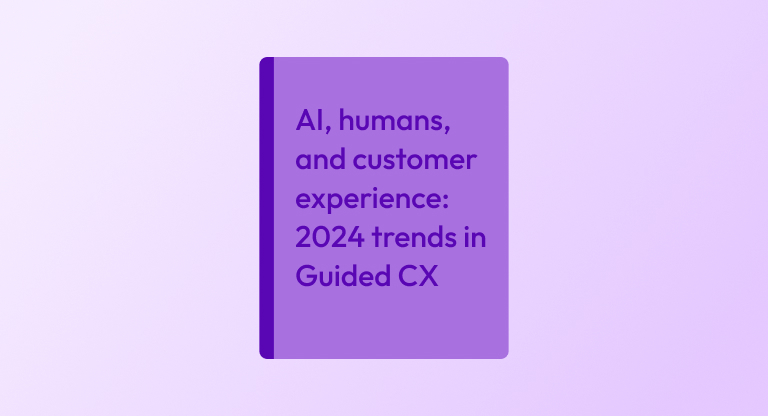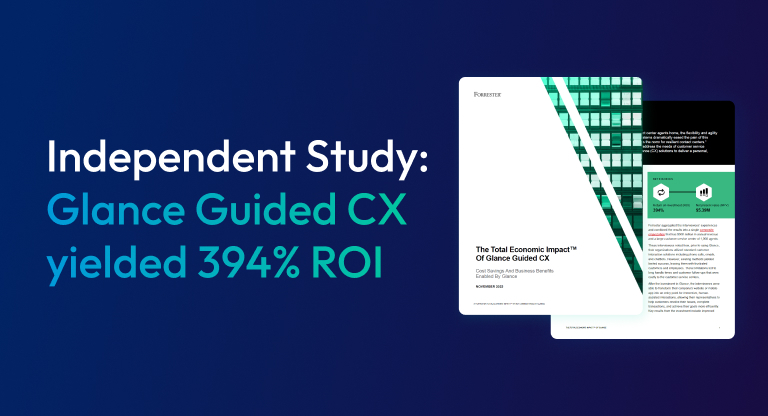Here’s a tough question: what do your prospects and customers really think about your customer experience (CX)? What does it actually feel like to engage with your business?
If you’re not sure, you’re in good company: CX blindspots are rampant. Most businesses are either painfully aware of them, or simply not looking close enough at the experiences they deliver.
CX blindspots often happen because of two critical flaws in your CX feedback loop that compound over time:
- Most customers don’t leave feedback after an interaction (either because they don’t care or it’s too hard)
- Most feedback processes are too blunt or overly complex (either shaving off nuance or creating further disengagement)
This post dives into the causes of this broken CX feedback loop, and why a different approach could close it.
Flaw #1: Customers can’t (or won’t) get in touch
Not every unhappy customer is going to call you to complain or seek a solution when they get stuck on your website or app. And not every happy customer is going to send you flowers. Some might opt to leave you a satisfaction score. But a significant proportion will simply ghost you altogether – leaving your website and your business without much fanfare (let alone a rating or a review).
Unfortunately, many customers have learned that leaving feedback feels like a pointless, one-way process: thumbs-downing into a void, with no expectation of changing anything. Most digital customers feel habitually unseen and unheard by businesses – especially when those businesses make it harder than ever to talk to a human.
When customers need to perform a simple transaction or ask a common question, it’s often more convenient for them (and more cost-effective for you) to do things themselves via your website or app – or speak to a chatbot or IVR.
But there are a huge number of scenarios in which self-service is no substitute for human help – and customers do need to talk to someone.
In those situations, making them work hard to do that gives them the distinct impression that your business doesn’t want to talk to them and understand their problems.
And that’s not good for them or you. If you don’t know what’s actually going wrong with your CX, you can’t take steps to improve it.
Flaw #2: Customers get in touch (but they don’t feel in touch)
But what about the stuck or dissatisfied customers that do reach out? They’re on your site, they hit a snag, and they call an agent – aren’t they at least able to share (and solve) their frustrations over the phone?
Unfortunately, although these interactions can be productive and positive, even the good calls are often stymied by the limitations of contact center technology. Agents have to work overtime to bridge the emotional distance that technology shortcomings create.
One common limitation is that agents can’t easily see what the customer is seeing – and vice versa. Customer and agent might be looking at the same webpage at (more or less) the same time, but they aren’t sharing a common view of the customer’s session.
Neither side can really see what’s going on, and that makes the process extremely long.
To begin with, the agent might have to ask the customer a series of questions to find out where they are on the website or app. (“What does it say at the top of the page?”)
Then the agent has to give verbose directions to help the customer take the next appropriate actions (“could you hover over the ‘Investing’ tab at the top? Now, can you see the option to ‘Invest in funds?’”) – while checking at every stage to ensure the customer’s done the correct thing (“Can you see that option? Have you clicked that option?”).
This rarely feels “helpful” to customers in need. It’s more like jumping through hoops while blindfolded.
Worse still, if there’s a mix-up or miscommunication – if, say, the customer clicks the wrong link and then has to be told to back out and start again – it can easily make them feel like this isn’t so much a collaborative interaction as a combative one.
Another common technological limitation that can lead to disconnected customer-to-agent interactions is the inability to activate agent (and customer) video.
When customers can’t see an agent’s face, it depersonalizes the agent, making them just a voice on the end of a line. This makes it harder for them to connect with and trust the agent – and makes awkward and contentious interactions more likely.
For these (and other) reasons, far from enabling customers to satisfactorily share their frustrations, call center interactions all too often actually increase and multiply those frustrations.
This makes many customers hesitant to make a call in the first place. That means alerting you to unseen problems with your CX – and your call-averse customers are liable to simply leave your service for another.
It’s get-in-touch time.
To close the CX feedback loop (and illuminate your CX blindspots) you need to be able to really understand your customers’ experiences as holistically as possible.
You need to know what’s frustrating them – ideally before they call you up in a state of agitation (on the precipice of becoming an ex-customer).
For some more insights into what might be frustrating your customers (while going under your radar), head to our Taxonomy of Hidden CX Frustrations, where we’ve rounded up 9 of the biggest customer headaches you might need to address.
But let’s say you want to begin connecting with customers right now. A great start would be to create a more genuinely connective form of customer-to-agent interaction for your business.
Head to our Experience the Solutions roundup to learn how Glance guided customer experiences like cobrowse enable customers to easily and securely connect with agents via your website or app – and collaborate in the moment to rapidly solve issues and guide purchasing decisions.
It’s just about the most in-touch customer experience imaginable – and makes frustrations (hidden or otherwise) evaporate in the warm glow of human connection.





